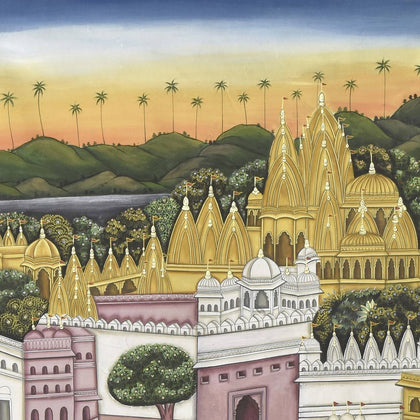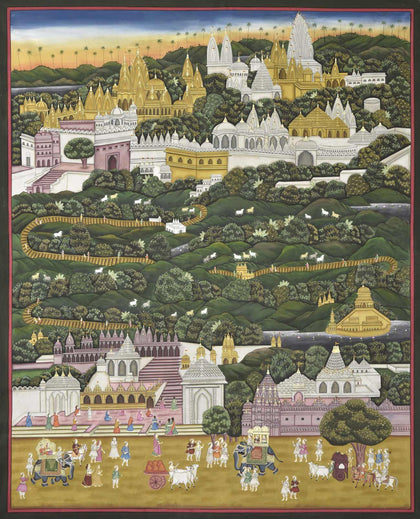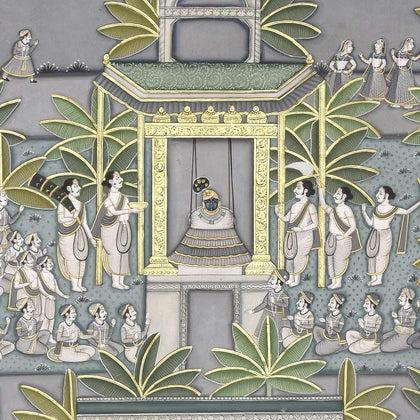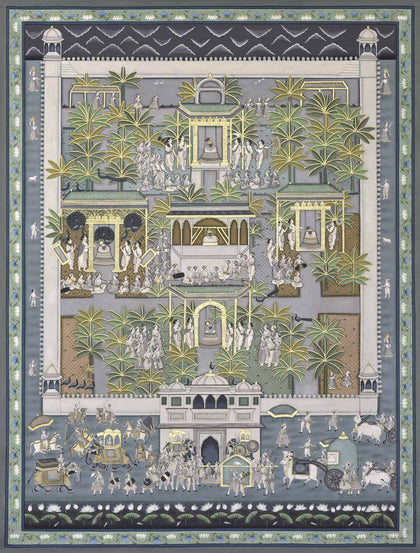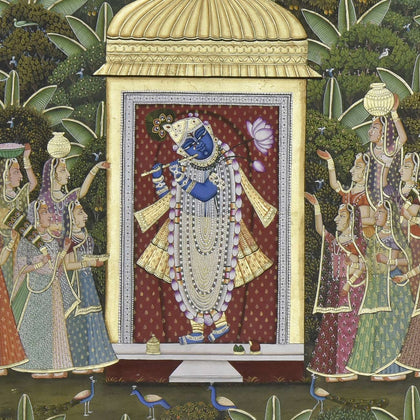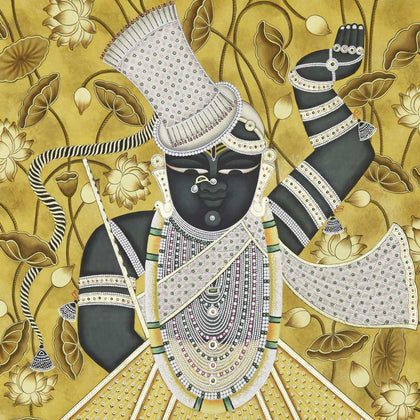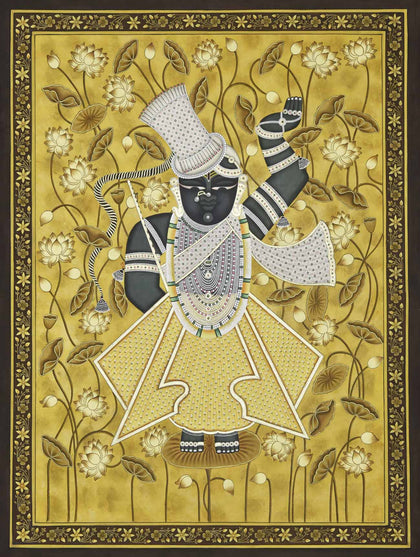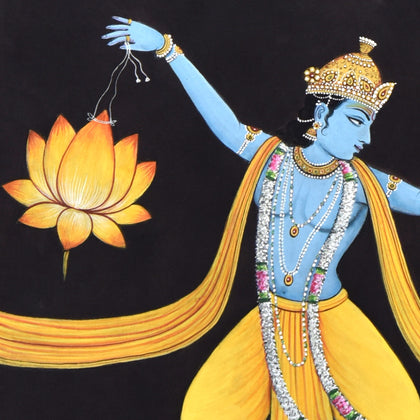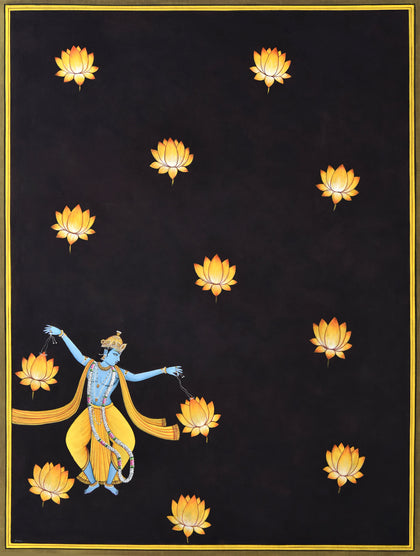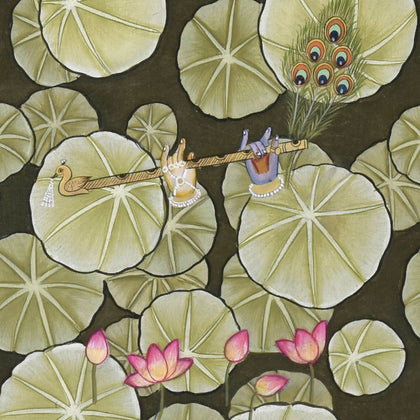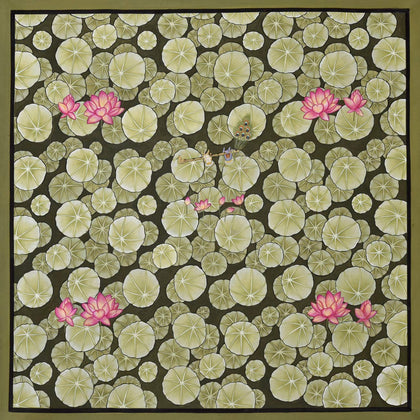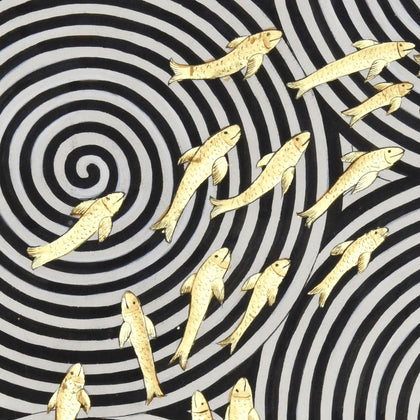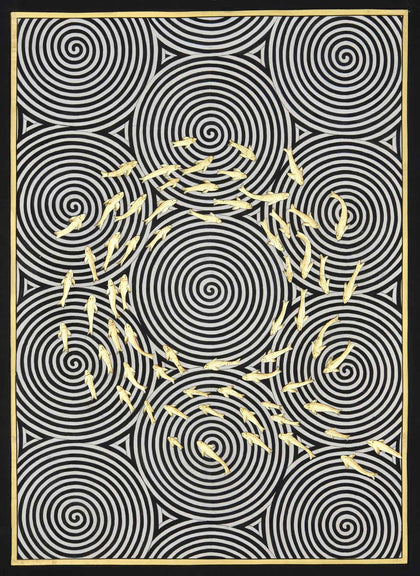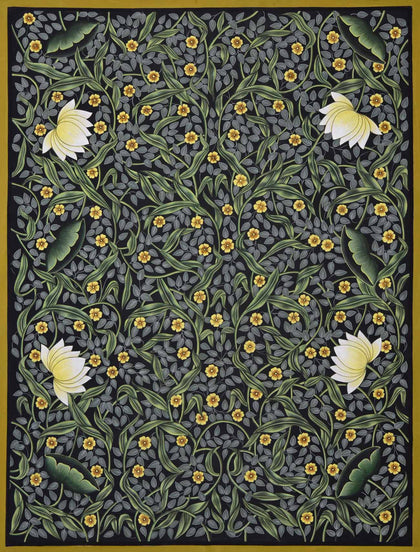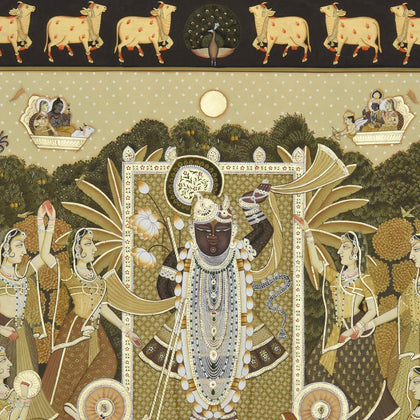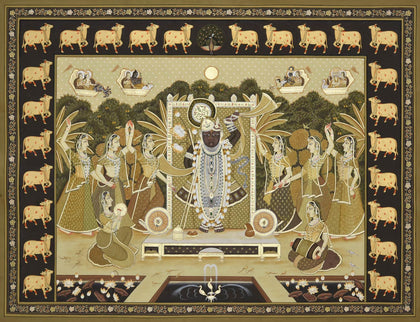Loading...
Raas Leela - 04
by NemichandPrice on Inquiry
All orders are insured for transit.
We ship worldwide.


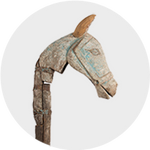
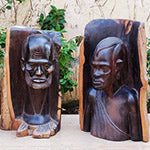
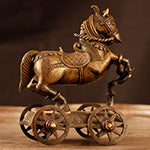

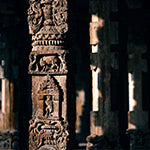
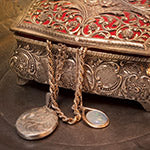
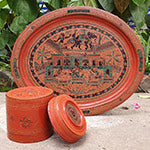
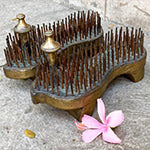
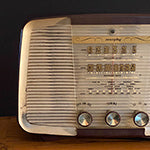
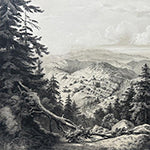
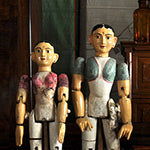
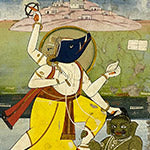
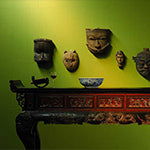
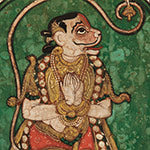

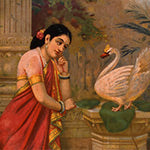
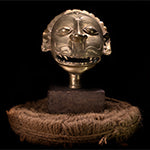
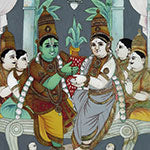
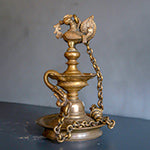
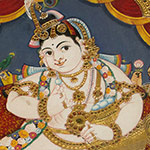
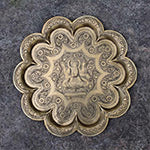
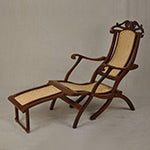
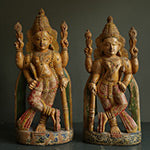


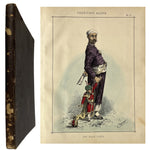

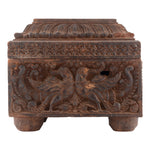
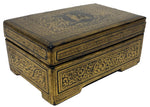
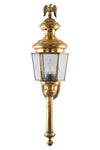

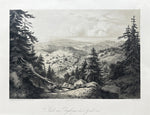


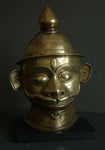
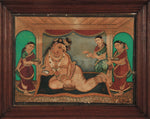
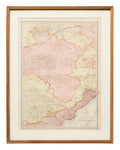
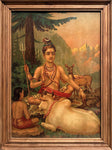

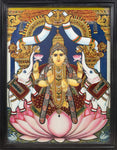

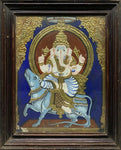
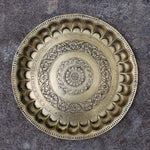
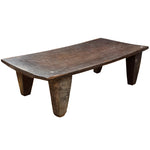
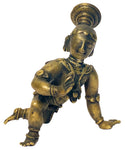


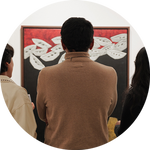
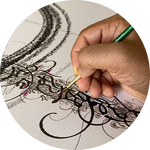
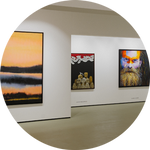

Please enter the email address linked to your Artisera account, and we will send you a link to reset your password.
Sign Up to access your Wish List and hear from us on all that’s new!
Loading...
All orders are insured for transit.
We ship worldwide.
All orders are insured for transit.
We ship worldwide.
| Size: | 46.5 x 46.5 inches |
| Medium: | Gold Leaf, Mineral Colours, and Fabric Colours on Cloth |
Raas Leela is the divine dance that Krishna performed with the Gopis (cow herding girls) of Braj. The dance symbolises the divine union and the spiritual love between Krishna and his devotees. The Raas Leela is said to have taken place on the first full-moon night after the monsoon, which marks the onset of autumn. Pichwais that depict the Raas Leela typically show Krishna dancing with the Gopikas in a circle. There will also be a full moon above the dancing figures, depicting Purnima. The Shrinathji figure in a Raas Leela Pichwai, is typically wearing jewels and brocade.
Raas Leela is the divine dance that Krishna performed with the Gopis (cow herding girls) of Braj. The dance symbolises the divine union and the spiritual love between Krishna and his devotees. The Raas Leela is said to have taken place on the first full-moon night after the monsoon, which marks the onset of autumn. Pichwais that depict the Raas Leela typically show Krishna dancing with the Gopikas in a circle. There will also be a full moon above the dancing figures, depicting Purnima. The Shrinathji figure in a Raas Leela Pichwai, is typically wearing jewels and brocade.
| Size: | 46.5 x 46.5 inches |
| Medium: | Gold Leaf, Mineral Colours, and Fabric Colours on Cloth |
All orders are insured for transit.
We ship worldwide.
This item has been added to your shopping cart.
You can continue browsing
or proceed to checkout and pay for your purchase.
This item has been added to your
shopping cart.
You can continue browsing
or proceed to checkout and pay for
your purchase.
This item has been added to your wish list.
You can continue browsing or visit your Wish List page.
Are you sure you want to delete this item from your Wish List?
Are you sure you want to delete this
item from your Wish List?

Thank you for sharing your email address!
You’ll shortly receive a Welcome Letter from us.
Please check your spam folders if you can’t
locate the email in your inbox.
Thank you for sharing your email address! You’ll shortly receive a Welcome Letter from us. Please check your spam folders if you can’t locate the email in your inbox.

